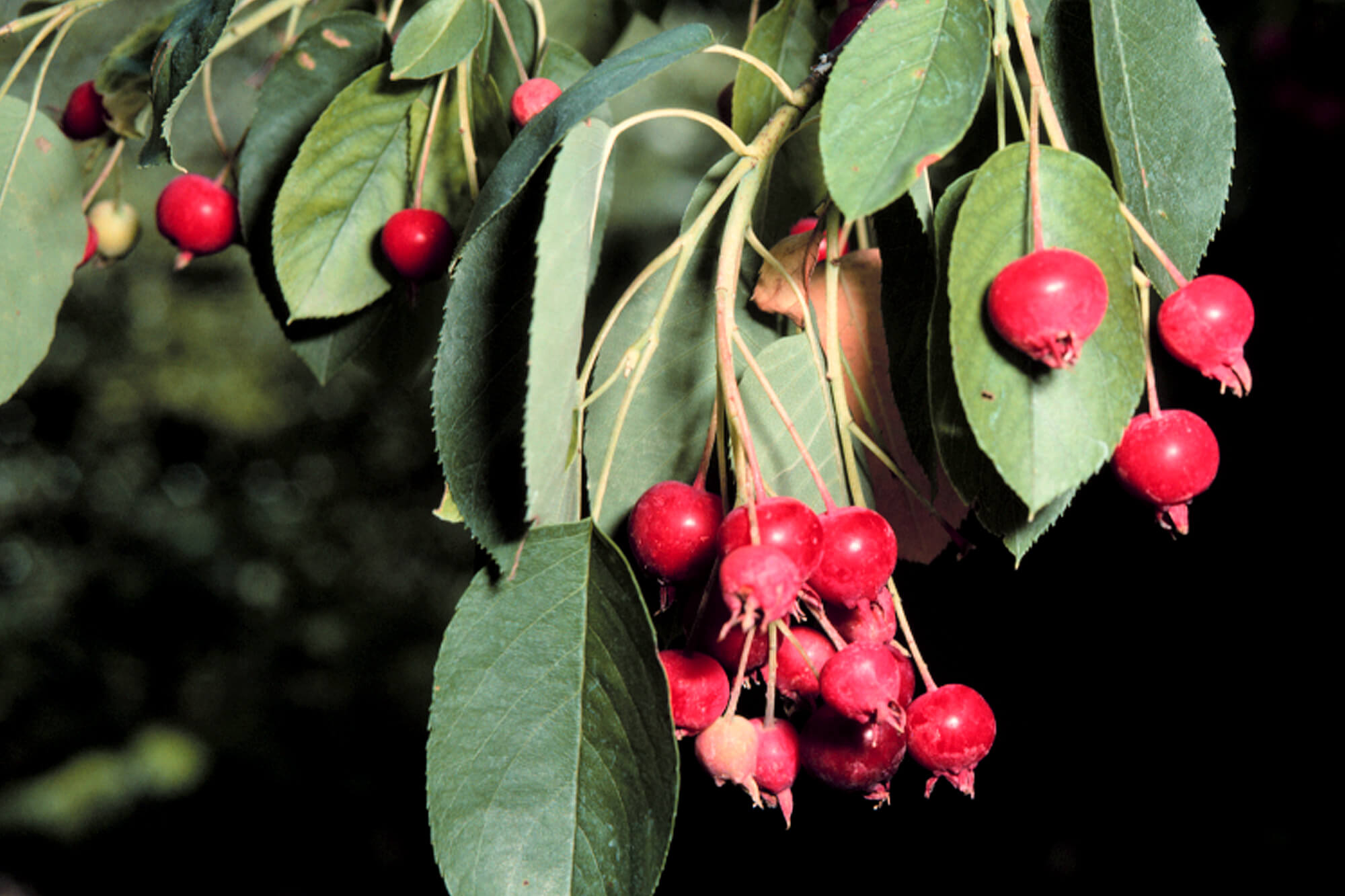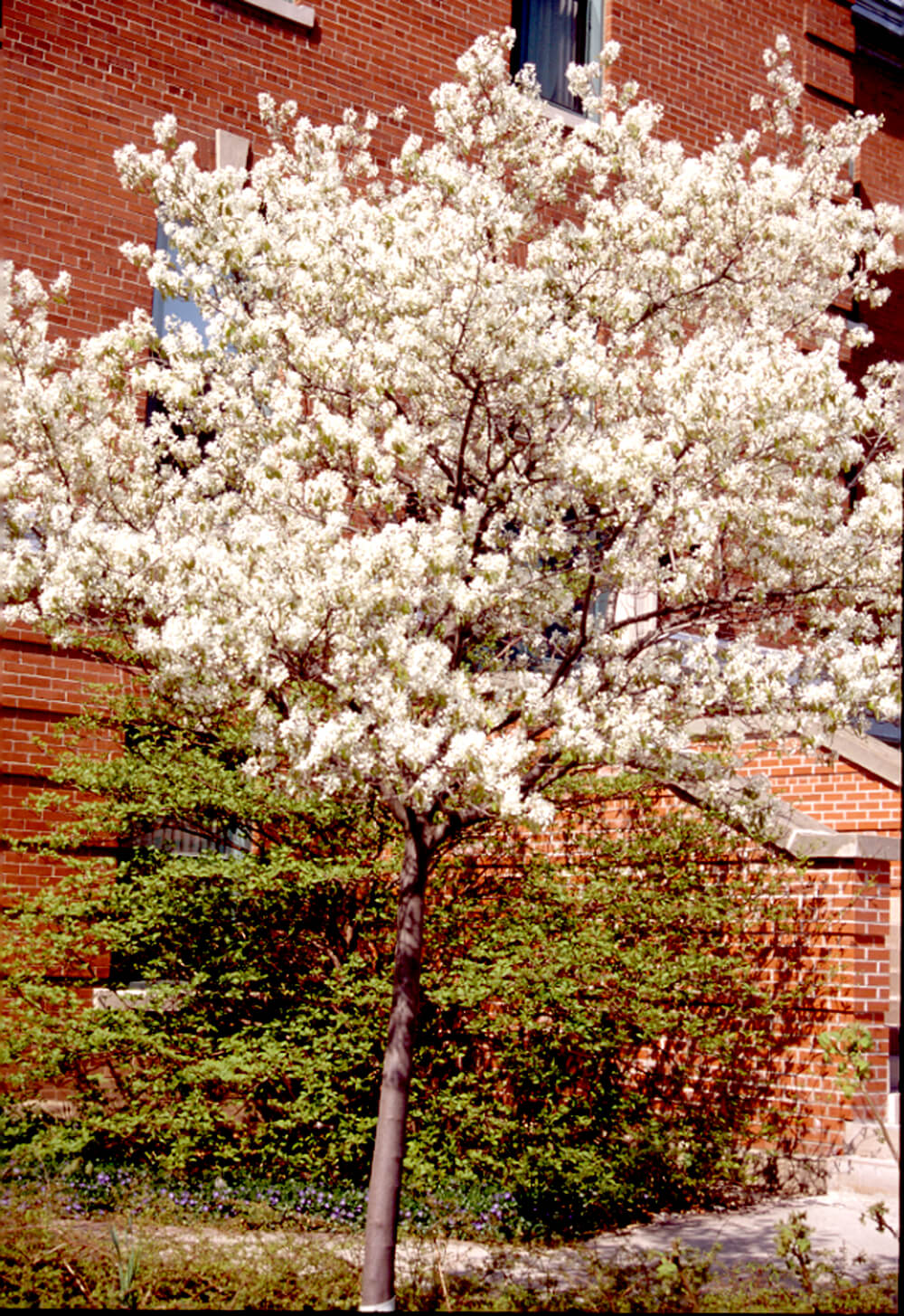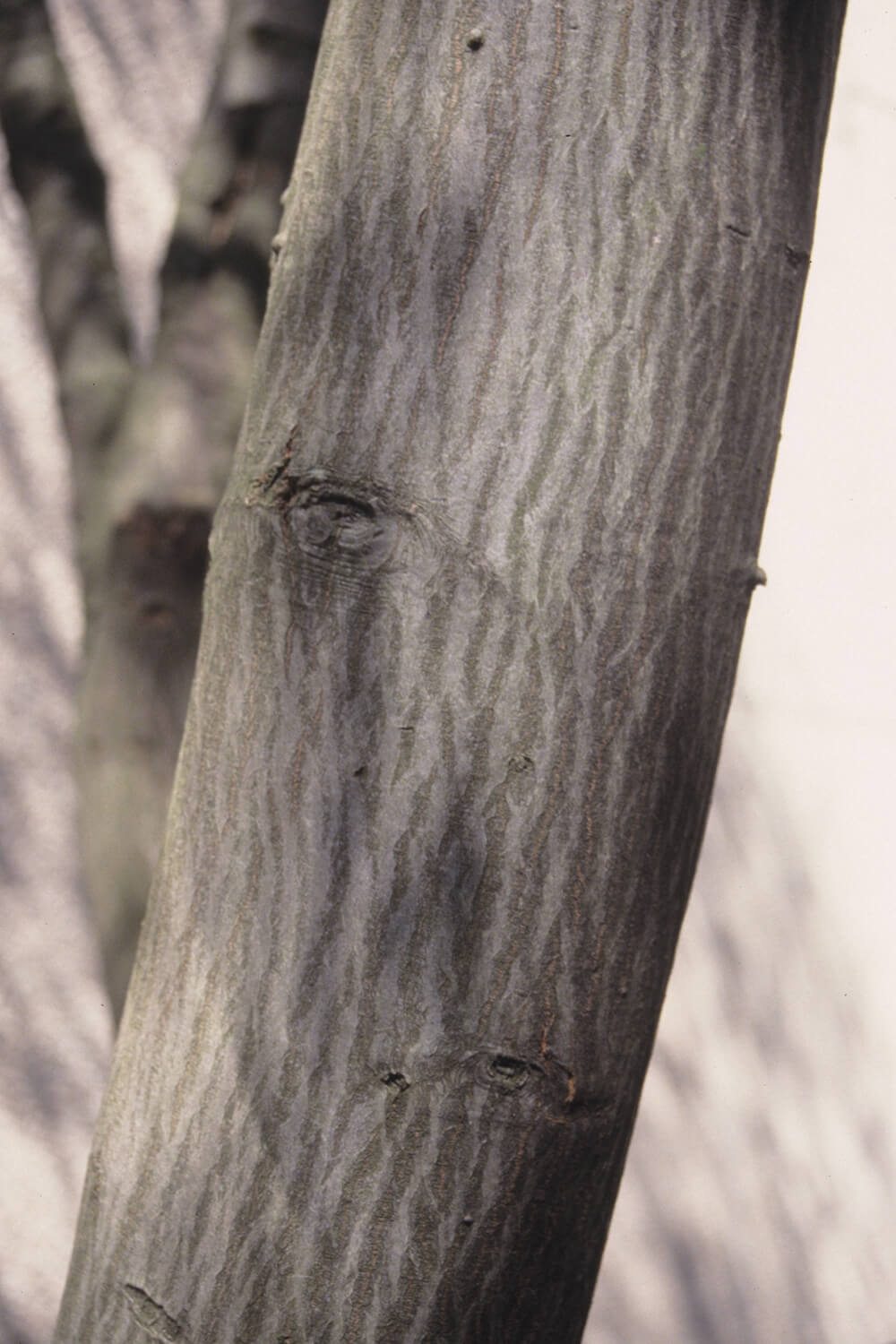June 15, 2012

The serviceberry is an early spring bloomer.
Serviceberry offers multi-seasonal interest
By Thelma Kessel
We live in a glorious land of seasons. As winter wears out its welcome, many of us search the bare forest areas for some sign of green. From the roadside, we see the lovely cloud of white amelanchier flowers in the forest canopy. It is a delicate texture to ease us into our busy spring.
Serviceberries are found across Canada. There are five or six species found along streams, the forest edge, hedgerows and increasingly in the urban setting.
It can be multi-stemmed or grown with a single trunk. A serviceberry (Amelanchier spp.) can reach nine metres tall with a graceful, rounded vase shape. The small oval leaves provide a medium texture that casts a light shade, perfect for underplanting in the urban garden.
The smooth bark adds to the elegant style, with just enough markings to be appealing. June is harvest time for the delicious fruit when you may see some interesting birds happily eating the small dark red berry-like pomes.
As the year proceeds, the serviceberry will tolerate the full sun or part shade in various levels of soil dryness. Few pests and diseases affect Amelanchier more than slight cosmetic injury. The sturdy little leaves remain injury-free to become part of the grand autumn show of gold, orange and red that marks yet another season of an interesting small tree.
There is much confusion in sorting out the various Amelanchier species.
The most commonly available tree-sized Amelanchier are downy serviceberry, Amelanchier arborea, and the Allegheny serviceberry, Amelanchier laevis. They are very similar in size and appearance and both make lovely, small, early spring-blooming trees for sites that aren’t too harsh. Amelanchier x grandiflora is a hybrid between these species with many more profusely blooming cultivars.
Shadblow serviceberry, Amelanchier canadensis is a multi-stemmed shrub.
These trees are a wonderful native choice for urban sites where the native soils haven’t been stripped and compaction and road salt are not too severe. Named cultivars are improving on heat and drought tolerance with choices in height and fall colour.
Serviceberry offers multi-seasonal interest that ranges from showy spring flowers to the bird show, as fruit is ripening, and then there is the fall colour as the leaves finish off their year. Add tolerance to most growing conditions and few pests and you have a very versatile small tree.
Funding was from the Farm Innovation Program, to the Landscape Ontario Growers’ Sector Group, which initiated the research project to develop a list of urban-tolerant trees that could be offered to the Ontario landscape industry. The project team, led by Thelma Kessel of Lacewing Horticulture, included Sean Fox, assistant manager, University of Guelph Arboretum, Jennifer Llewellyn, OMAFRA nursery crops specialist, and Dr. Glen Lumis, Professor Emeritus, University of Guelph.
The 29 trees on the list are considered suitable for Ontario urban settings, while encouraging species diversity. The research group feels the trees on this list have tolerance to urban situations, along with aesthetics and relative freedom from pests and diseases. The trees are similar to ash in size and form. Smaller specimens were included for sites where ash would be too large.
We live in a glorious land of seasons. As winter wears out its welcome, many of us search the bare forest areas for some sign of green. From the roadside, we see the lovely cloud of white amelanchier flowers in the forest canopy. It is a delicate texture to ease us into our busy spring.
Serviceberries are found across Canada. There are five or six species found along streams, the forest edge, hedgerows and increasingly in the urban setting.
It can be multi-stemmed or grown with a single trunk. A serviceberry (Amelanchier spp.) can reach nine metres tall with a graceful, rounded vase shape. The small oval leaves provide a medium texture that casts a light shade, perfect for underplanting in the urban garden.
The smooth bark adds to the elegant style, with just enough markings to be appealing. June is harvest time for the delicious fruit when you may see some interesting birds happily eating the small dark red berry-like pomes.
As the year proceeds, the serviceberry will tolerate the full sun or part shade in various levels of soil dryness. Few pests and diseases affect Amelanchier more than slight cosmetic injury. The sturdy little leaves remain injury-free to become part of the grand autumn show of gold, orange and red that marks yet another season of an interesting small tree.
There is much confusion in sorting out the various Amelanchier species.
The most commonly available tree-sized Amelanchier are downy serviceberry, Amelanchier arborea, and the Allegheny serviceberry, Amelanchier laevis. They are very similar in size and appearance and both make lovely, small, early spring-blooming trees for sites that aren’t too harsh. Amelanchier x grandiflora is a hybrid between these species with many more profusely blooming cultivars.
Shadblow serviceberry, Amelanchier canadensis is a multi-stemmed shrub.
These trees are a wonderful native choice for urban sites where the native soils haven’t been stripped and compaction and road salt are not too severe. Named cultivars are improving on heat and drought tolerance with choices in height and fall colour.
Serviceberry offers multi-seasonal interest that ranges from showy spring flowers to the bird show, as fruit is ripening, and then there is the fall colour as the leaves finish off their year. Add tolerance to most growing conditions and few pests and you have a very versatile small tree.
Urban tolerant trees
This is the sixth in a series of articles highlighting 29 trees selected by the Landscape Ontario Growers’ Sector working group, as recommended alternatives to ash and Norway maple. For the complete list and factsheets on each, go to landscapeontario.com/trees-for-urban-landscapes.Funding was from the Farm Innovation Program, to the Landscape Ontario Growers’ Sector Group, which initiated the research project to develop a list of urban-tolerant trees that could be offered to the Ontario landscape industry. The project team, led by Thelma Kessel of Lacewing Horticulture, included Sean Fox, assistant manager, University of Guelph Arboretum, Jennifer Llewellyn, OMAFRA nursery crops specialist, and Dr. Glen Lumis, Professor Emeritus, University of Guelph.
The 29 trees on the list are considered suitable for Ontario urban settings, while encouraging species diversity. The research group feels the trees on this list have tolerance to urban situations, along with aesthetics and relative freedom from pests and diseases. The trees are similar to ash in size and form. Smaller specimens were included for sites where ash would be too large.



